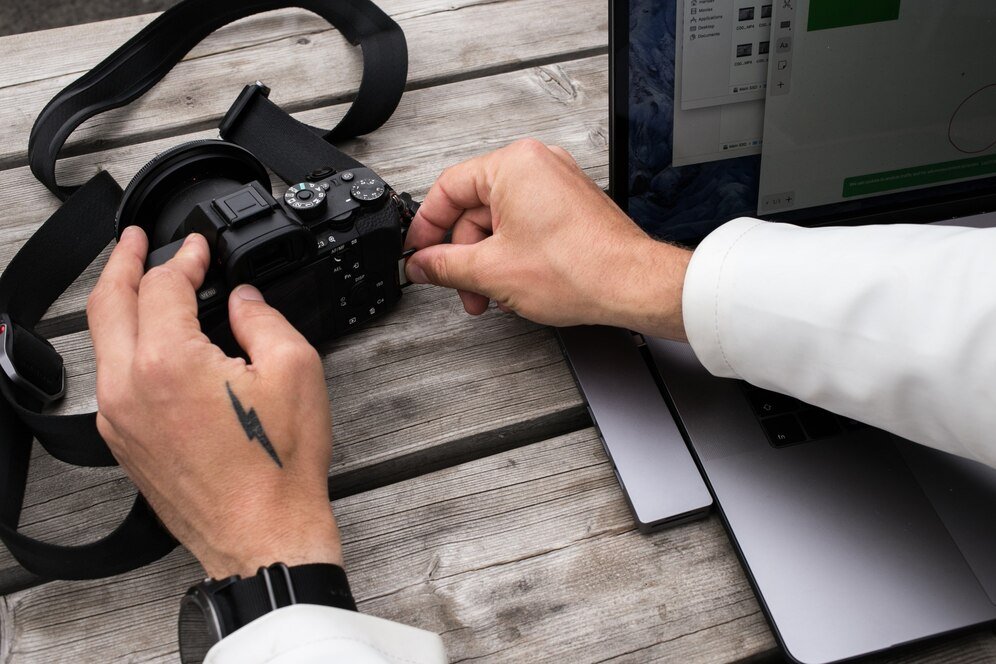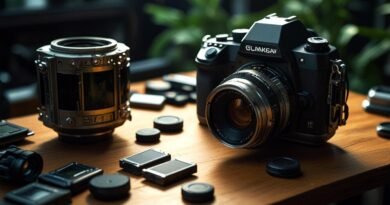Understanding ISO in Photography: Comprehending Its Significance and Operation
Among the many concepts in photography, ISO is one that is particularly important since it can have a big impact on the quality of your shots. However, what does ISO actually mean and how does it impact your photos? We will examine the nuances of ISO, its role in the exposure triangle, and useful advice for using it properly in this post.
What is ISO?
The International Standards Organization, or ISO, describes how sensitive the sensor in your camera is to light. Put more simply, it establishes the amount of light your camera need in order to take a picture. Consider trying to read a book in a poorly light space. You can see better in the shadows by improving the sensitivity of your eyes, which works similarly to raising the ISO. Making this adjustment is essential to getting the ideal exposure under different lighting circumstances.

The ISO sensitivity of a sensor doubles with each rise in value, usually from 100 to 6400 and higher. Photographers of all skill levels must know how to adjust ISO efficiently.
The Importance of ISO
In addition to aperture and shutter speed, ISO is a crucial part of the exposure triangle. A well-exposed image is the result of the interactions between all the components. Here are some explanations for why it’s crucial to comprehend ISO:
-
Optimal Exposure: ISO is useful for preserving a balanced exposure, particularly in difficult lighting situations. You can get the proper amount of brightness in your pictures without compromising on image quality by adjusting the ISO.
-
Creative Control: Photographers can convey their artistic vision by adjusting the ISO. When it comes to achieving a high-ISO grainy impression or a clean low-noise photo, ISO is an essential weapon in your creative toolbox.
-
Adaptability: Different ISO settings are needed for different shooting situations. Being able to swiftly respond to shifting lighting conditions with ISO adjustment makes you a more versatile photographer.
How ISO Works
ISO is expressed as a number, usually between 100 and 6400; higher numbers correspond to higher sensitivity. This is how it operates:
-
Low ISO (100-400): Low ISO works best in good light and yields photos with the least amount of noise and the most detail. This environment guarantees brilliant colors and crisp details, making it perfect for landscapes or well-lit portraits.
-
Medium ISO (400-1600): This spectrum finds a happy medium, covering lighting conditions that are a little difficult. It is sufficiently adaptable for indoor gatherings and cloudy days, providing respectable quality without making excessive noise.
-
High ISO (1600 and above): High ISO is necessary for low-light situations so that you may take pictures without using a flash. But using this setting raises the possibility of noise, which frequently results in a grainy look that might lower the quality of the image.
ISO and the Exposure Triangle
To get the ideal exposure, one must understand the underlying link between ISO, aperture, and shutter speed. Consider the exposure triangle as a balancing act in which changing one component requires changing the others. This is how they communicate:
-
Increasing ISO: To avoid overexposure, you may need to reduce the aperture size (a higher f-stop value) if you increase the ISO to 1600.
-
Lowering ISO: In contrast, if you choose a lower ISO, you might have to use a shorter shutter speed in order to get more light into the camera. If the subject is moving, this could result in motion blur.
Practical Tips for Using ISO
To master ISO and make the most of your photography, consider these practical tips:
-
Experiment Freely: Feel free to experiment with various ISO settings. To learn how different ISO settings impact your photos, take a few photographs at different settings.
-
Know Your Camera: Cameras vary in how they respond to noise. Learn how your camera performs at different ISO levels to determine the perfect balance.
-
Utilize Auto ISO: An auto ISO option is available on many current cameras. This can let you concentrate more on composition and less on technical tweaks, especially in dynamic scenes where lighting conditions change quickly.
-
Post-Processing Techniques: In the era of digital technology, post-processing can help reduce certain noise. Spend some time studying how to use tools that will help you improve your photos and get rid of extra grain.
The Creative Side of ISO

ISO is a great instrument for artistic expression as well as a technical setting. Many photographers purposefully exceed the ISO range in order to create particular tones or visual effects. An photograph can benefit from the texture, nostalgia, and sense of urgency that grain can bring. Gaining proficiency with ISO improves both your technical and artistic abilities.
Common ISO Myths
With the proliferation of photography resources, several myths about ISO have emerged. Let’s debunk a few:
-
Higher ISO Always Means Worse Quality: While higher ISO can introduce noise, it doesn’t inherently mean poor quality. In the right context, high ISO can lead to stunning low-light images.
-
You Should Always Use the Lowest ISO: While low ISO reduces noise, it’s not always practical. Knowing when to increase ISO is crucial for capturing the shot you envision.
-
ISO Doesn’t Matter for Professional Photography: Every photographer, regardless of skill level, must understand ISO’s impact on their work. It’s an essential aspect of mastering photography.
Conclusion
To put it briefly, ISO is a basic idea in photography that affects exposure, creativity, and image quality. You can better execute your artistic vision and handle a variety of shooting situations by being aware of its importance and how it works. Remember that ISO is your ally in the pursuit of the ideal shot as you advance in your photography career. It is more than simply a number.
FAQs about ISO
What does ISO stand for in photography?
ISO stands for International Standards Organization, which measures the sensitivity of your camera’s sensor to light.
How does ISO affect exposure?
ISO plays a crucial role in the exposure triangle. Increasing ISO allows your camera to capture more light, helping to achieve optimal exposure in low-light conditions.
What is a good ISO setting for low light?
For low-light conditions, a higher ISO setting (such as 1600 or higher) is recommended to capture more light. However, be mindful of the potential for increased noise.
Can I use auto ISO for every situation?
While auto ISO can be helpful in dynamic environments, it’s important to understand your camera and the shooting conditions to ensure the best results.
Is high ISO always bad?
Not necessarily. While high ISO can introduce noise, it can also be beneficial for capturing images in low light. The key is to know when and how to use it effectively.
How can I reduce noise in high ISO images?
You can reduce noise through post-processing techniques using software, or by using noise reduction features available in many cameras.
What ISO setting should I use for landscape photography?
For landscape photography, a low ISO setting (100-200) is recommended to achieve maximum detail and minimal noise, especially in bright conditions.




